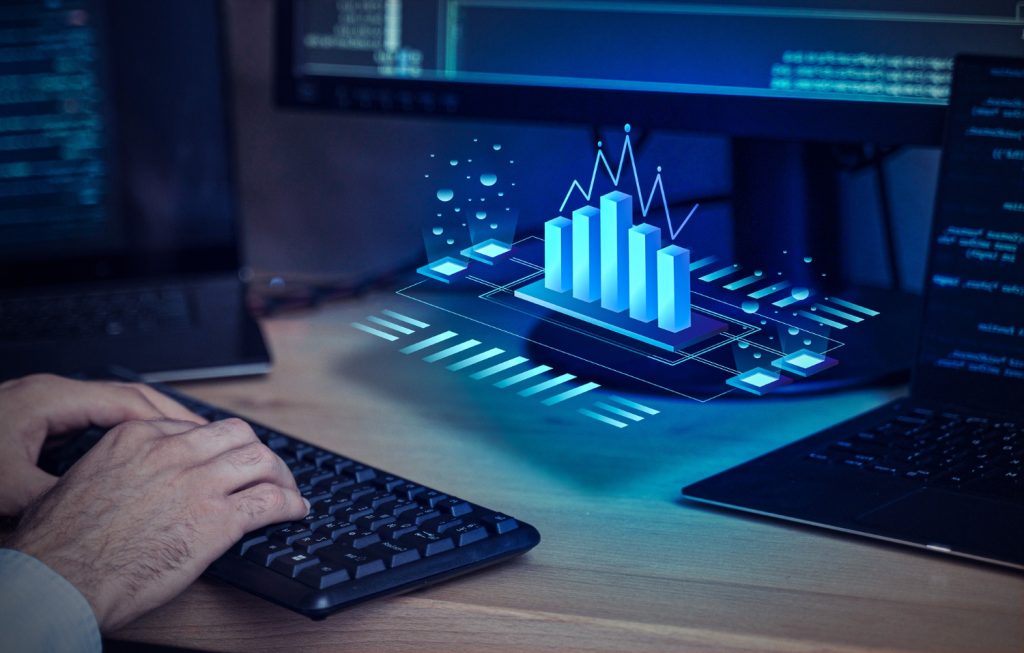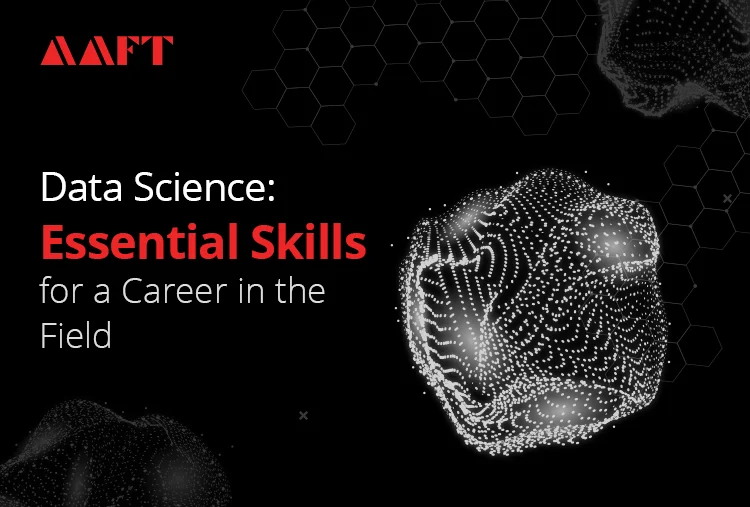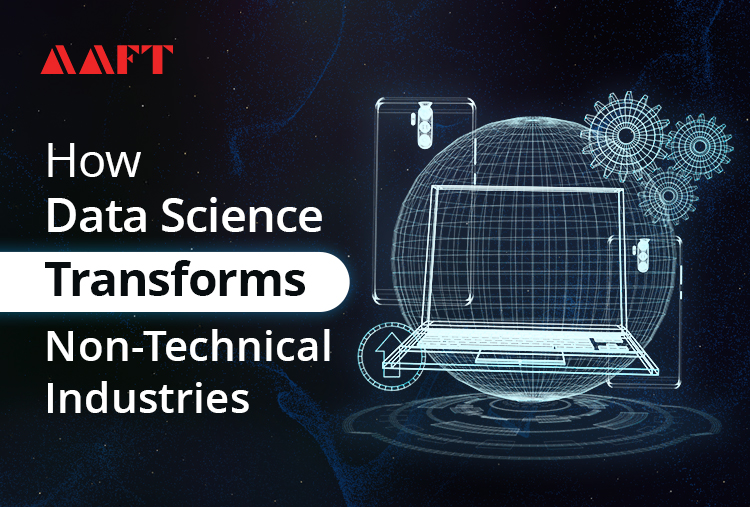Future Data: Navigating the Landscape of Data Science Trends in 2024
In 2024, the world of AI and data analytics is changing significantly. New technologies and businesses need to balance being innovative with using data responsibly. Two big things happening are the rise of generative AI and more data collection, which make keeping data private and secure important for companies everywhere. This also means we need better ways to use and share data, and modern data contracts are becoming a big deal.
All of this is happening in a well-studied area called data science, which is helping technology grow and impacting all kinds of industries. People who work with data are facing challenges and opportunities in this fast-changing world. Combining human creativity with AI and machine learning has opened up many possibilities. With the progress in data science, we can now predict trends, spot patterns, and see what might happen in the future. Staying ahead is not just a goal for data professionals – it’s a must.
Data Science Trends in 2024
1. Graph Insights: Discovering Connections
Graph Insights is a new thing in 2024 that looks at how things in data are connected. It’s not just regular analysis but focuses on relationships and connections using graphs to get useful insights. Imagine data as dots and lines – this helps organizations see complex networks better, finding patterns and odd things that normal methods might miss. In places like social media, fraud detection, and network optimization, Graph Insights is like a super tool to understand how data is all linked, giving a full picture that usual methods might not catch.
Read Also: How Data Science is Changing the World
2. Decentralized Data with Mesh Structure:
Do you want free career counseling?
Ignite Your Ambitions- Seize the Opportunity for a Free Career Counseling Session.
- 30+ Years in Education
- 250+ Faculties
- 30K+ Alumni Network
- 10th in World Ranking
- 1000+ Celebrity
- 120+ Countries Students Enrolled
Think of Data Mesh Architecture as changing how we handle data in 2024. Instead of keeping all the data in one big central place, companies are spreading it out. This makes it easier for different teams to use and manage the data. It’s like breaking down walls that keep data separate and letting each team take care of its data stuff. By doing this, companies can move and grow more easily, work together better, and everyone can be responsible for their data. Data Mesh Architecture is about understanding that data is everywhere, and it helps create a system that works better for all the different needs of modern organizations.
3. Augmented Analytics:
Augmented Analytics helps people make smarter decisions. It’s like having a smart assistant using fancy technology like AI and machine learning. Instead of doing all the hard work yourself, this tech automatically gets data ready, figures out important things, and builds models to help you understand stuff better. With clever algorithms, Augmented Analytics gives you insights from data, making things less complicated and letting you make better decisions. As data gets more complicated, this tech makes your work smoother, especially for people who aren’t super tech-savvy. It’s a cool shift towards analytics tools that are easier for everyone to use.

Read Also: Data Science: Essential Skills for a Career in the Field
4. Edge Analytics:
Edge Analytics is all about dealing with data right where it comes from – at the edge of the network. This is super important, especially when we need quick, real-time info, like with smart devices and far-off sensors. Instead of sending all the data to one big center, Edge Analytics thinks right there, cutting down waiting time and making things work faster. It’s like making speedy decisions on the spot. As the world gets more connected, Edge Analytics makes sure data is processed fast and efficiently at the edge, creating a new era of quick and smart ways of doing things.
5. Data Governance and Ethics:
Data Governance and Ethics means creating strong rules and plans to make sure data is safe, secure, and used in the right way in companies. With more rules about privacy and how data should be handled, businesses are working hard to have good strategies for Data Governance. This includes deciding who owns the data, controlling who can access it, and making sure everyone in the company understands how to handle data responsibly. Since data is a big deal in making decisions, being ethical – doing things the right way – is super important. This way, organizations not only get useful stuff from data but also do it in a way that’s responsible and open.
Read Also: How Data Science Transforms Non-Technical Industries
6. Explainable AI (XAI):
Explainable AI (XAI) focuses on making AI systems less like a secret box. As AI gets more complicated, it’s crucial to know how it makes decisions so people can trust it and follow the rules. XAI techniques work to open up the ‘black box’ of AI, showing how it decides things. This is especially important in areas like healthcare, finance, and law where we need to be sure AI is doing its job right. By making AI less mysterious, organizations can be more sure it’s reliable and follow the rules, and users can trust it to make good decisions.
Do you want free career counseling?
Ignite Your Ambitions- Seize the Opportunity for a Free Career Counseling Session.7. Data Democratization:
Data Democratization pushes to make data and tools for understanding it available to more people in a company. Instead of keeping data stuff only for tech experts, this trend wants everyone – even those who aren’t super techy – to use data for making decisions. It’s like making data easier to understand and letting anyone in the company use it. With simple interfaces and tools that anyone can use, Data Democratization helps everyone in different departments use the power of data, even if they’re not tech experts. This trend is all about creating a culture where everyone uses data to make decisions, bringing more ideas and teamwork into the whole company. Since data is so important, making sure everyone can use it well becomes a big deal.
8. Data Observability:
Data Observability makes sure organizations check and make sure their data is healthy and working well. It’s like making sure the quality of data is good, finding any strange things, and fixing problems that might affect how trustworthy data insights are. With data getting more complicated, keeping an eye on data observability becomes super important to make sure decisions are based on good information. This trend uses tools to watch over data, sends automatic alerts if something seems off, and takes steps ahead of time to make sure data pipelines run smoothly and give the right insights at the right time.
Read Also: What are alternative career options in Data Science field?
9. Data Fabric:
Data Fabric is about creating a system where data can work together, whether it’s in a local place, the cloud, or a mix of both. Data Fabric helps break down barriers that keep data separate, making it easier for data to work well across the whole organization. It’s like making a smooth and flexible system so that companies can change and keep up with new business needs and the latest technology. With more and more types of data out there, using Data Fabric becomes a key part of making sure everything fits together well and works smoothly.
10. Continuous Intelligence:
Continuous Intelligence is all about using real-time analytics in how companies work. This trend ensures a constant flow of insights, helping organizations make smart decisions as things happen. Continuous Intelligence is about smoothly adding analytics into everyday tasks, making sure decision-makers always have the newest info. This is super important in fast and busy industries, letting companies quickly adapt to changes and grab new chances. By using continuous intelligence in how things are done, businesses can get better at moving fast, responding quickly, and making smart decisions in a world that’s always changing and competitive.
Read Also: Top 5 Types of Data Scientists and Responsibilities
Conclusion:
The future demands extracting maximum value from data, emphasizing accurate analysis and responsible data handling. As we enter this promising era, let’s navigate the evolving landscape of data analytics with confidence and enthusiasm, shaping success stories together. Explore the world of data science with the AAFT School of Data Science, your partner in mastering this dynamic field.
FAQ
How does Data Observability contribute to data quality and reliability?
Data Observability ensures the health and performance of data pipelines. By monitoring data quality, identifying anomalies, and addressing issues proactively, it contributes to the reliability of data-driven insights, enhancing decision-making processes.
What is the significance of Data Democratization in a company?
Data Democratization aims to make data and analytics accessible to everyone in a company, not just tech experts. It creates a culture where all departments can use data, fostering collaboration and informed decision-making.
Can you explain the role of Graph Insights in data analysis?
Graph Insights focuses on uncovering connections in data by representing it as nodes and edges. It helps organizations see complex networks, identify patterns, and gain valuable insights, especially in areas like social media, fraud detection, and network optimization.
Why is Explainable AI (XAI) important in sectors like healthcare and finance?
XAI makes AI systems transparent by revealing how they make decisions. In fields like healthcare and finance, where accountability and trust are critical, understanding the decision-making process of AI becomes paramount.

AAFT has been providing the world with limitless creativity and expression since 1993! Through a dynamic and industry-driven curriculum, AAFT provides engaging and captivating articles to persuasive blogs and empowers its readers to explore diverse avenues of creative media education-related content.







